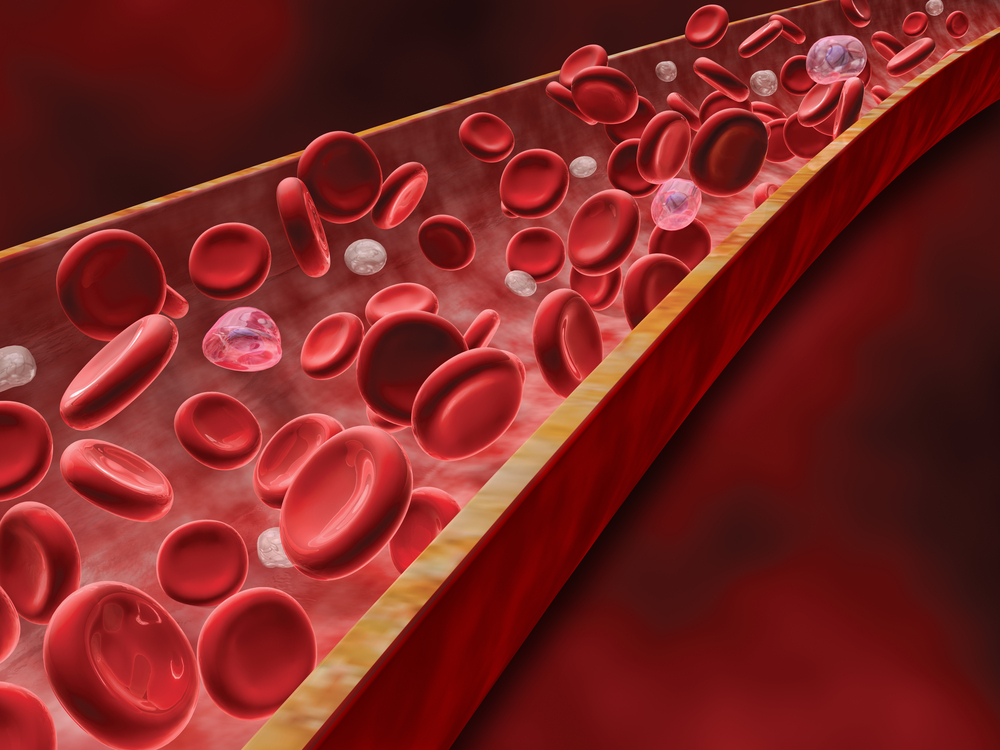HMGB1 Protein May Drive Blood Vessel, Tissue Damage in Scleroderma, Study Suggests

A protein involved in inflammation and tissue regrowth — HMGB1 — may be the main driver of blood vessel damage and tissue fibrosis in scleroderma, suggesting its potential as a therapeutic target, according to a study.
The study, “Platelet microparticles sustain autophagy-associated activation of neutrophils in systemic sclerosis,” was published in the journal Science Translational Medicine.
Abnormal immune responses to tissue damage contribute to scleroderma. Inflammation, activation of endothelial cells — which line the interior of all blood vessels — and blockage of small blood vessels all occur during the course of the disease, and lead to the activation of myofibroblasts, a type of cell that releases collagen contributing to the development of fibrosis, or scarring.
Scleroderma is also characterized by the activation of platelets, which release growth factors and HMGB1, a protein that promotes the development of fibrosis as well as tissue regeneration. These effects depend on the protein’s ability to induce autophagy, a cellular mechanism to clear aggregated proteins, as well as other cellular waste.
Studies showed that HMGB1 levels are high in the blood but depleted in platelets of sleroderma patients. These patients also show higher blood levels of platelet-derived microparticles — tiny vesicles shed from the cellular membrane — containing HMGB1.
Based on this, researchers from Ospedale San Raffaele and Università Vita-Salute San Raffaele in Italy hypothesized that platelets may be a source of HMGB1 in scleroderma patients and could be key drivers of vascular damage.
HMGB1 from platelets activates neutrophils. These immune cells then generate neutrophil extracellular traps (NETs), networks of outside the cells fibers outside the cells that participate in the defense against pathogens but are also involved in the development of autoimmune diseases.
Although data suggest that neutrophils are involved in tissue damage, little is known about their role in scleroderma. Aiming to address this gap, the scientists assessed the activation and function of neutrophils in scleroderma patients, as well as the role of platelet-derived microparticles in vascular damage and tissue fibrosis.
The team first confirmed that platelet-derived microparticles, including those containing HMGB1, were more abundant in the blood samples of 57 scleroderma patients than in 53 healthy controls.
They then found that these HMGB1-containing microparticles interacted with neutrophils, both in vitro and in mice, promoting autophagy characterized by increased protein degradation, prolonged survival, and production of NETs.
Remarkably, these effects were eliminated in the presence of an HMGB1 inhibitor called BoxA.
The investigators then observed that injecting platelet-derived microparticles from scleroderma patients into mice caused endothelial damage and fibrosis, which were associated with neutrophil activation and NET production.
They also observed that activated neutrophils released DNA and other content from the nucleus, leading to inflammation and tissue damage. Again, BoxA abolished these effects.
“We showed both in vitro and in an animal model of the disease that the presence of micro-particles expressing HMGB1 is enough to activate the immune system and in particular neutrophils,” Norma Maugeri, PhD, the study’s first author, said in a press release.
Angelo Manfredi, MD, the study’s senior author, added: “Obviously the results we obtained must be further confirmed and expanded, yet we believe that an excessive amount of HMGB1 outside the cells might be the main cause of damage to vessels and fibrosis of connective tissues.”
Overall, the results “suggest that platelet-derived, microparticle-associated HMGB1 may be a potential indicator of disease and target for novel therapeutics,” the researchers concluded in the study.






